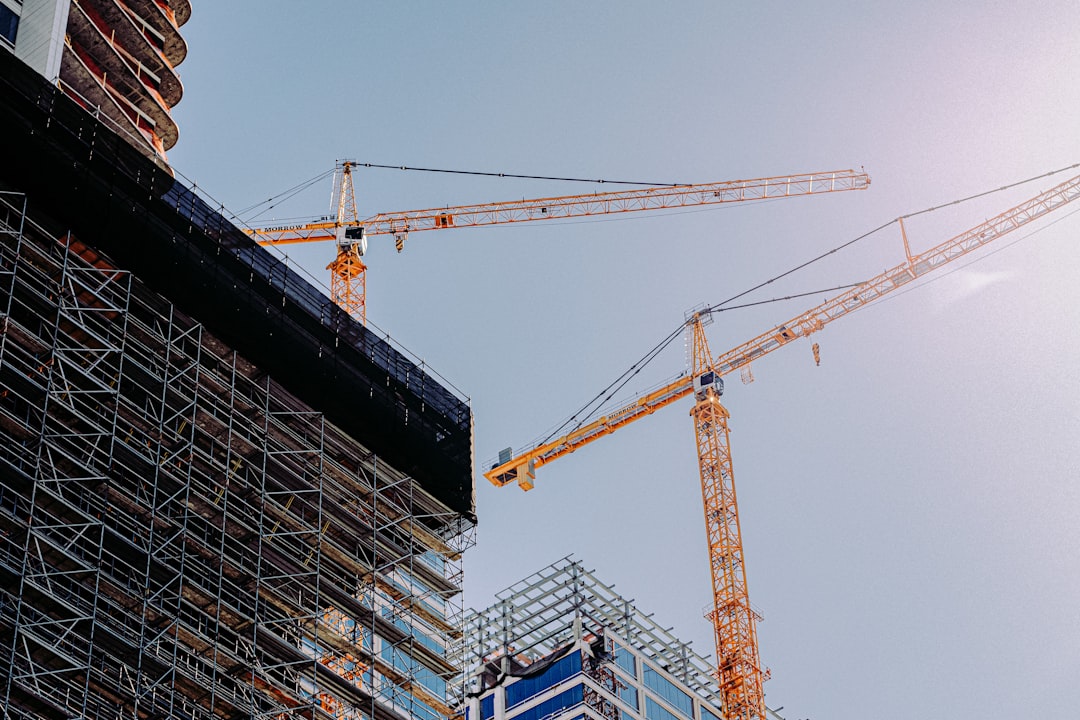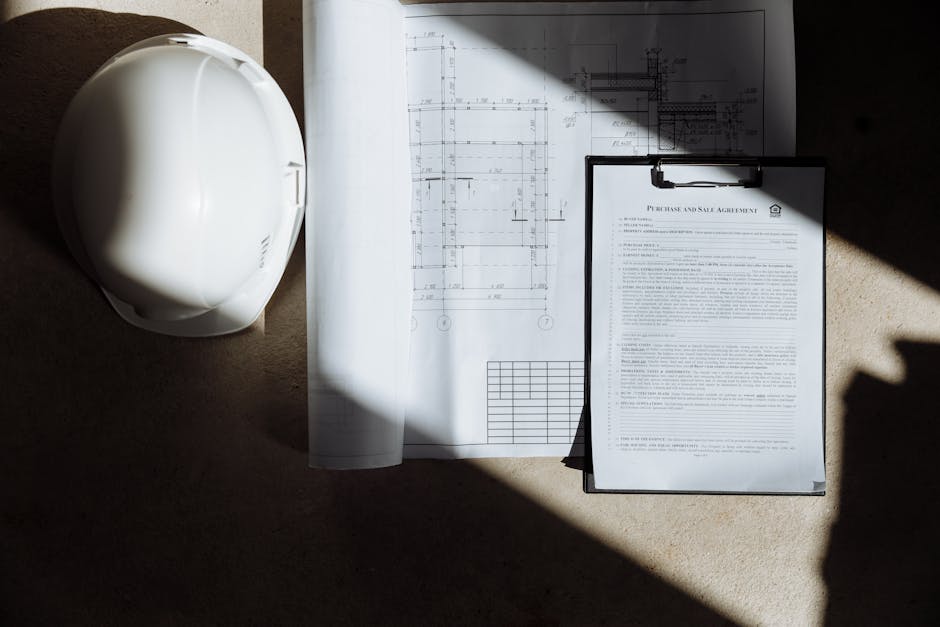Blueprint to Success: Navigating Construction Loan Documentation

Construction loan documentation is a critical aspect of real estate financing, particularly for projects that involve building or extensively remodeling a property. These loans, often short-term and transitionary, are designed to cover the cost of construction before being replaced by more traditional, long-term mortgage financing. For real estate investors seeking to quickly and efficiently seize investment opportunities, understanding and preparing the necessary documentation is key.
Here are the essential pieces of construction loan documentation that investors need to be aware of:
- Financial Information: Updated pay stubs, bank statements, and tax returns to verify the borrower's financial standing.
- Construction Loan Agreement: Outlines the terms and conditions for fund disbursement during the construction period.
- Promissory Note: A legal instrument in which a borrower promises to repay the loan under specified terms.
- Deed of Trust: Provides the lender with a claim against the collateral property until the loan is paid in full.
- Comprehensive Liability Insurance: Proof of coverage for potential risks during the construction period.
Grasping these key documents can speed up the loan process, minimize frustration, and help potential investors capitalize on lucrative opportunities with confidence.

Terms related to construction loan documentation:
- construction loan credit requirements
- construction loan interest rates
- how do commercial real estate construction loans work
Understanding Construction Loan Documentation
When diving into construction loan documentation, you'll encounter three main packages: the Homeowner/Borrower Credit Package, the Builder/Contractor Information Package, and the Construction Project Information Package. Each serves a unique purpose in the loan approval process, ensuring that both the borrower and project are financially sound and well-planned.
Homeowner/Borrower Credit Package
The first step in securing a construction loan is demonstrating the borrower's financial stability. Lenders require:
- Tax Returns: The last two years' returns are essential to verify income consistency.
- W2 Forms and Pay Stubs: These documents further confirm employment and income levels.
- Asset Statements: Include bank accounts, stocks, bonds, and retirement funds from the last two months.
- Profit and Loss Statement: For self-employed individuals, this provides a snapshot of business health.
These documents collectively paint a picture of the borrower's financial health, which is crucial for lenders assessing risk.
Builder/Contractor Information Package
The next package focuses on the builder or contractor, whose expertise and reliability are vital for project success. Lenders typically request:
- Contractor License and Insurance Bond: Proof that the builder is legally permitted to operate and financially backed.
- Credit Report: A reflection of the builder's financial history and reliability.
- General Liability Insurance: Ensures coverage for potential construction-related risks.
This package reassures lenders that the project is in capable hands.
Construction Project Information Package
Finally, the Construction Project Information Package digs into the specifics of the project itself. This includes:
- Construction Plans: Detailed, signed blueprints are necessary for understanding the scope and feasibility of the project.
- Construction Contract: A formal agreement between the builder and borrower, outlining terms and responsibilities.
- Budget Worksheet: Provides a line-by-line breakdown of expected costs, ensuring financial transparency.
- Land Details: Deeds or purchase offers, along with any covenants or restrictions, clarify ownership and usage rights.
By compiling these documents, borrowers can present a comprehensive and compelling case to lenders, highlighting both the project's viability and their own financial readiness. This preparation not only facilitates smoother loan processing but also positions investors to seize opportunities swiftly and effectively.
Key Components of Construction Loan Agreements
When navigating construction loan documentation, understanding the key components of loan agreements is crucial. These components form the foundation of the relationship between the lender and borrower, setting the stage for a successful project.
Construction Loan Agreement
At the heart of any construction loan is the Construction Loan Agreement. This document outlines the rights and obligations of both parties. It specifies conditions for advancing funds and details what constitutes a default.
Rights and Obligations: The agreement clearly defines what both the lender and borrower are responsible for during the construction process. This includes timelines, deliverables, and performance standards.
Fund Advancement: The agreement will outline how and when funds will be released to the borrower. Typically, funds are advanced in stages as construction progresses to ensure responsible use of the loan.
Default Conditions: It’s crucial to understand what actions or inactions could lead to a default. This might include delays in construction, failure to meet performance standards, or financial mismanagement.
Promissory Note and Deed of Trust
Two other critical documents in the loan process are the Promissory Note and the Deed of Trust.
Promissory Note: This is a promise to repay the loan. It includes the principal amount, interest rate, and repayment schedule. The note serves as a legal obligation for the borrower to repay the lender.
Deed of Trust: This document acts like a mortgage, where the property is used as collateral. If the borrower defaults on the loan, the lender can foreclose on the property to recover the owed amount.
Guaranty and Title Insurance
To further protect the lender's interests, additional documentation is often required:
Guaranty: This is typically provided by a third party who promises to repay the loan if the borrower defaults. It adds an extra layer of security for the lender.
Title Insurance: Ensures that the borrower has clear ownership of the property and that there are no hidden liens or legal issues. This insurance protects both the lender and borrower from potential title disputes.
Understanding these components is vital for anyone involved in a construction loan. By familiarizing themselves with these documents, borrowers can better steer the complexities of construction financing and move their projects forward with confidence.
Essential Documentation for Construction Loans
When you're diving into construction loan documentation, having the right paperwork is key. This ensures your project aligns with all necessary codes and regulations, and it protects your investment from unforeseen hiccups.
Building Permits and Compliance
Before laying the first brick, securing building permits is crucial. These permits confirm that your construction project complies with local city codes, state regulations, and federal requirements, such as handicap accessibility standards.
City Codes: Each city has specific building codes that dictate how structures should be built. These codes are in place to ensure safety and sustainability.
State Regulations: Beyond city codes, state regulations might impose additional requirements, such as environmental considerations or specific construction methods.
Federal Handicap Regulations: If your project includes public spaces, federal laws require accommodations for individuals with disabilities.
Insurance and Appraisal
Insurance and appraisal are two pillars that support the financial and operational aspects of construction projects.
Hazard Insurance: Protects against potential damage from natural events like fires or storms. It's crucial to have this in place before construction begins to safeguard your investment.
Liability Insurance: Covers any injuries or damages that occur on the construction site. This is vital for protecting both the builder and the borrower from legal claims.
Market Value Appraisal: An appraisal determines the property's value both "as is" and "as completed." This helps in assessing the project's financial viability and ensuring the loan amount aligns with the property's worth.
Flood Determination: If your property is in a flood zone, additional documentation and insurance may be required. This not only protects the property but also satisfies lender requirements.
Environmental Assessment: Ensures the construction site is free from hazardous materials and complies with environmental regulations. This assessment is crucial for avoiding future legal and health issues.
By ensuring you have all the necessary permits and insurance in place, you can steer the complexities of construction financing with confidence. This preparation helps in avoiding costly delays and ensuring a smooth construction process.
Frequently Asked Questions about Construction Loan Documentation
What documents are needed for a construction loan?
When applying for a construction loan, several documents are essential to ensure a smooth approval process. Here's a quick checklist to guide you:
Homeowner/Borrower Credit Package: This includes recent tax returns, W2 forms, pay stubs, and asset statements. These documents demonstrate your financial stability and ability to repay the loan.
Builder/Contractor Information Package: Your contractor's license, insurance bond, credit report, and proof of general liability insurance are necessary. This assures the lender of the builder's qualifications and reliability.
Construction Project Information Package: You'll need detailed construction plans, a signed construction contract, a budget worksheet, and land details. These documents outline the scope and cost of the project.

How do construction loan agreements work?
A construction loan agreement is a contract that outlines the terms between you (the borrower) and the lender. It specifies how funds will be advanced and the conditions for default. Here’s a breakdown:
Rights and Obligations: Both parties have specific roles. The lender agrees to provide funds, and you commit to completing the project as planned.
Fund Advancement: Funds are usually released in phases, called "draws," as construction milestones are met. This ensures funds are used appropriately.
Default Conditions: These are scenarios where the borrower might breach the agreement, such as failing to meet construction deadlines or misusing funds. Understanding these terms helps avoid pitfalls.
What is the role of a builder in construction loan documentation?
The builder plays a crucial role in construction loan documentation. Their involvement ensures that the project is feasible and aligns with the lender's requirements. Here’s what a builder contributes:
Project Feasibility: Builders provide a detailed plan that includes timelines, materials, and labor costs. This helps the lender assess the project's viability.
Compliance Assurance: Builders ensure that the project complies with local codes and regulations. This is crucial for obtaining necessary permits and avoiding legal issues.
Insurance and Risk Management: Builders typically carry liability insurance, which protects both parties from potential claims during construction.
Involving a qualified builder not only streamlines the loan process but also adds a layer of expertise that can prevent costly mistakes and delays.
Conclusion
At BrightBridge Realty Capital, we simplify the construction loan documentation process, ensuring our clients experience a seamless journey from start to finish. Our commitment to providing competitive rates and fast closings sets us apart in the real estate financing landscape.
With locations in New York, NY, we offer nationwide services custom to meet the unique needs of each investor. Our direct lending approach eliminates intermediaries, allowing us to offer some of the most competitive rates in the market. We pride ourselves on our ability to close deals quickly, often within a week, so you can seize opportunities without delay.
Our expertise in construction loans ensures that every aspect of the process is handled with precision. From the initial application to the final payoff, we manage every detail in-house, providing a seamless process for our clients. This dedication to efficiency and client satisfaction is why so many investors choose BrightBridge Realty Capital for their real estate financing needs.
Ready to take the next step in your real estate journey? Explore our loan options and experience the BrightBridge difference today.



